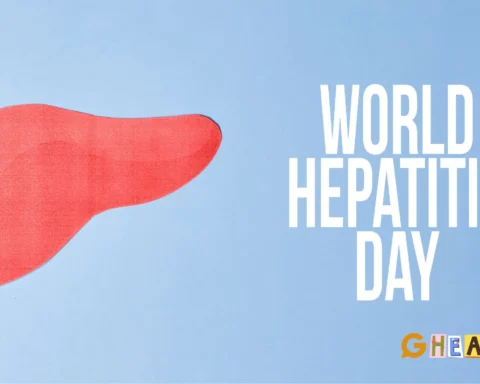Slovenian companies are known for their high-quality products and services, as well as their innovation, professionalism, reliability, and adaptability, making them valuable partners for businesses looking to enter European markets efficiently and successfully.
Public-private partnerships in logistics (PPPs) are playing an increasingly important role in the development of the industry in Slovenia. The government has identified logistics as a critical sector for growth and is actively seeking private sector investment to help upgrade infrastructure, improve efficiency, and boost competitiveness. Public-private partnerships in logistics can address government budget constraints and attract investment in infrastructure projects, improving efficiency, innovation, and risk sharing between the public and private sectors.
Table of Contents
Geographical Advantage of Slovenia in Transportation Connectivity
Slovenia's strategic location at the 5th and 10th Pan-European corridors makes it a vital transportation connector between the Adriatic Sea and the Balkans. The Port of Koper facilitates trade and transportation. Ljubljana's Jože Pučnik Airport hosts various cargo logistics companies and plans to develop a new intermodal center with a railway connection. The airport handled 1.7 million passengers and 11.3 million tons of cargo in 2019 but declined in 2020 and 2021 due to pandemic restrictions and Adria's bankruptcy. International logistics giants UPS and DHL operate hubs at the airport.
Overview of the Logistics Sector
Slovenia has 2,500 logistics and distribution companies, contributing significantly to the economy and export revenue. These companies generate a turnover of EUR 3.6 billion and play a crucial role in air cargo shipping, ship cargo transport, goods storage, and maritime and inland logistics services. The presence of airports like Jože Pučnik, Port of Koper, and Maribor Airport enhances Slovenia's logistics capabilities, facilitating efficient transportation and distribution of goods. Public-private partnerships in logistics can help reduce transportation costs and improve delivery times.
Public-private partnerships in logistics are being utilised for infrastructure development, such as constructing the second railway line between the Port of Koper and Divača, focusing on roads, railways, and airports. The working model is also being used to invest in new technologies and innovations, such as a national logistics platform that provides real-time information on the movement of goods, to improve the efficiency and sustainability of the logistics industry. Public-private partnerships in logistics can optimise infrastructure development and enhance operational efficiency.
Trade Snapshot
India and Slovenia have maintained trade since 1991. India imported USD 303.24 million from Slovenia in 2021-22 while exporting USD 494.39 million, importing 703 commodities across 19 sectors and exporting 856 commodities in the same sectors.
Top Trading Sectors
India's top importing sectors from Slovenia include chemicals, machinery and electrical, aircraft, base metals, wood pulp, and paper pulp. In contrast, its top exporting sectors are chemicals, machinery and electrical, textile, base metals, and aircraft.
Trade Trends
Import Trends: India's imports from Slovenia shifted by 11.57% from 2020-21 to 2021-22, with a 291.44% increase in the aircraft sector and a 67.15% decrease in the ceramic glass and other sectors.
Export Trends: India's exports to Slovenia increased by 39.35% from 2020-21 to 2021-22, with a 465.38% increase in the vegetable oil sector and a 201.7% increase in the textile industry.
Market Challenges
Slovenia needs to complete structural economic reforms and reduce state involvement despite privatising the banking sector. Challenges include transparency, bureaucratic procedures, opaque public tender processes, and heavy tax burdens. Key reforms include privatisation, increased foreign investment openness, transparency in public procurement, pension reform, and business-friendly labour and taxation code changes. The government is seeking private sector participation in public-private partnerships in logistics to modernise the transportation infrastructure.
The workforce in Slovenia is highly skilled and educated, but high social welfare and income taxes can make it expensive to hire new workers. Slovenia has taken positive steps towards privatisation and tax reform, but many private sector contacts consider the pace of reforms slow. Judicial backlogs sometimes delay the resolution of legal disputes in Slovenia, although there has been a decrease in the total backlog in recent years. The success of a depends on the commitment and collaboration of both parties.
Indian exporters face challenges in Slovenia due to a lack of accurate information, global supply chain disruptions, trade barriers, currency fluctuations, and language barriers. Effective communication, knowledge of customs, and tax compliance are also essential for successful exports. The government and private sector are working together in public-private logistics partnerships to improve the efficiency of the supply chain.
The procurement process in public-private Partnership projects involves multiple stakeholders and requires careful planning and adherence to legal and regulatory frameworks for procurement activities. Value for money is the optimal use of resources for desired outcomes, evaluating PPP projects' economic, social, and environmental impacts, and long-term sustainability to determine a worthwhile investment. Risk allocation in public-private partnerships in logistics projects involves distributing risks among public and private sectors based on each party's capabilities, expertise, and financial capacity, ensuring sustainable outcomes.
Leading Sectors for the Indian Market
Regarding transportation logistics, several sectors in Slovenia offer opportunities for Indian businesses. Let's explore some of the leading sectors:
Port and Maritime Logistics: The Port of Koper in Slovenia is a vital European gateway that offers direct access to Central and Eastern Europe via the Mediterranean Sea and enables efficient transportation to European markets.
Air Cargo Shipping: Slovenia's airports, including Jože Pučnik Airport, are well-developed, and air cargo shipping is a significant sector for time-sensitive or high-value goods, offering Indian companies logistics options.
Services at Terminals
- Terminal services play a vital role in logistics operations.
- Slovenian terminals, including those at the Port of Koper, handle cargo efficiently.
- Indian businesses can collaborate with these terminals to ensure smooth operations.
Rail and Road Transport: Slovenia's railway and road networks facilitate efficient transport of goods within Europe, attracting Indian exporters to explore partnerships with Slovenian logistics companies.
Storage and Warehousing: Slovenian companies provide modern warehousing solutions and efficient inventory management, benefiting Indian exporters and ensuring the efficient logistics storage and handling of goods.
Inland Logistics Services: Inland logistics in Slovenia involves transportation services like distribution, last-mile delivery, and supply chain management, which can be facilitated by collaborating with Indian businesses.
Smart Logistics Solutions: Slovenia's innovative logistics solutions, incorporating IoT, data analytics, and automation, are attractive to Indian companies seeking advanced services, promoting partnerships with tech-savvy providers.
Investment Opportunities in Slovenia's Logistics Sector
Despite high inflation and Ukraine war-related supply chain issues, Slovenia experienced a robust post-pandemic recovery with 8.1% growth and high employment. The country's strategic location at the Mediterranean and Eastern Europe crossroads makes it an ideal partner for maritime and overland logistics services, catering to Indian and South Asian exporters. Public-private partnerships in logistics are a long-term commitment that requires trust, transparency, and effective communication between the parties involved.
Slovenia is promoting itself as a logistics hub for foreign companies entering the EU market, offering investment opportunities. The Port of Koper in Northern Adria provides modern infrastructure. Slovenia aims to improve logistics and transportation facilities by 2030, prioritising digitalisation to reduce bureaucracy and costs. SPIRIT promotes Slovenia as a logistics hub. Public-private partnerships in logistics should aim to enhance the competitiveness of the logistics industry and boost economic growth.
Recent Infrastructure Projects in Slovenia
Slovenia is investing in railway infrastructure, including the Ljubljana-Jesenice-State Borderline, to improve train speed, safety, and capacity. The total investment is EUR 173.35 million, with a current contribution of EUR 57.8 million. The ministry also works on large-scale projects to improve interoperability, axle loads, and line capacity. Slovenia's recovery plan supports a project to develop low-power processors and semiconductor chips in residential neighbourhoods.
A 27-kilometer railway near Koper manages port congestion, reduces emissions, and creates jobs. The Divača–Koper railway line's second track, estimated to cost €1 billion, opened in September 2020, improving rail connectivity. The project The ministry has secured EU financing for the modernisation of several train stations between Ljubljana and Maribor, including Jesenice station, Litija, Zagorje, Trbovlje, Laze pri Dolskem, Šentjur, Ponikva, and Rače.
Budget
Slovenia's government has proposed a budget for 2023 and 2024 to address uncertainties caused by COVID-19, energy crises, and geopolitical tensions. The government anticipates that the budget deficit will surpass 3% of the GDP while also predicting unprecedented levels of revenue. The budget includes €16.7 billion for 2023 and €15.5 billion for 2024. The investment act allocates €2 billion from 2021 to 2031, with €200 million allocated annually for the following two years.
Environmental Impact of the Recent Infrastructure Projects
Upgrading transportation infrastructure, including railways and highways, can enhance connectivity, drive economic growth, foster social development, and promote sustainable mobility. It reduces private vehicle reliance, lowers emissions, and improves air quality.
Companies can also integrate renewable energy into infrastructure projects. Public-private partnerships in logistics are crucial vehicles for fostering collaboration between government entities and private sector stakeholders.

Green supply chain demand coalition
Construction activities can cause habitat disruption, air and noise pollution, and land use changes, affecting local flora and fauna. Railway expansion may encroach on ecologically sensitive areas, while increased traffic and industrial activities contribute to these issues. Construction runoff and traffic increase pollution in rivers and streams, leading to water contamination. Environmental Impact Assessments (EIAs) are crucial for evaluating potential impacts of infrastructure projects, proposing mitigation measures like biodiversity conservation, green design, and public participation in decision-making to minimise environmental harm and promote sustainable solutions.
Slovenia Promotes Sustainable Energy Use in Transportation
Slovenia is improving its cycling infrastructure, including the Jure Robič Biking Trail (D2), Drava Cycling Route, and Parenzana Bike Trail, which connect points, promote eco-friendly travel, and connect European long-distance connections. Slovenia's 77% of trains run on electric power, providing a quiet, faster, and comfortable travel experience, showcasing the country's commitment to green transportation. Slovenian cities promote sustainable urban mobility by introducing new cycling paths and electric car-sharing systems for environmentally friendly transport. Public-private partnerships in logistics are expected to create new job opportunities and stimulate innovation in the logistics sector.

In 2022, funding for logistics firms that promote sustainable services rose by 12%. The proportion of total funding for logistics start-ups that have sustainability-related business models or value propositions increased from 16% to 36% for sustainable logistics start-ups. Slovenia aims to increase renewable energy consumption by 2030, with a National Energy and Climate Plan aiming for 30%-35%, with specific sectoral goals in electricity, heating, cooling, and transport. The sustainable energy policy focuses on energy efficiency and renewable energy substitution, aiming to reduce energy consumption and promote a more sustainable energy landscape. Public-private partnerships in logistics can help reduce transportation costs and improve delivery times.
Challenges in Funding
Since 1991, Slovakia's economic progress has been mainly due to economic growth, but its transport and energy infrastructure still lags behind Western European states. Major projects like the Divača-Koper railway line and TEŠ 6 power plant face controversies due to financial mismanagement, corruption, and inefficiency, affecting public trust. Slovenia's public infrastructure funding is significantly lower than the EU, and state financial guarantees hinder the development of robust mechanisms. Despite having strong funding capacity and foreign equity sponsorship, Slovenia struggles to attract private investors for its infrastructure development. The public-private partnerships in logistics are a strategic approach to address the challenges facing the logistics industry.
Private Participation Expected by the Government of Slovenia
Slovenia's Port of Koper is attracting private investment to improve its infrastructure, streamline operations, and enhance connectivity. The country has nine business facilitation zones, offering public-private partnerships, joint ventures, and logistics infrastructure investment opportunities. The government has allocated funds for railway and airport infrastructure, with private participation expected in projects like upgrading European corridors and airport facilities.
Slovenia's trade with India reached €676 million in 2022, indicating potential for further collaboration and private investment in logistics and transportation. Slovenia and India's trade reached €676 million in 2022, which suggests potential for further cooperation and private investment in logistics and transportation. Public-private partnerships in logistics can leverage the strengths of both sectors to achieve common goals.
Timeline for the Completion of the Recent Infrastructure Projects
The timeline for Slovenia's recent infrastructure projects varies depending on the project. The railway infrastructure project's first section between Divača and Črni Kal has opened, indicating progress. However, financial constraints have caused delays in projects like renovating the east-west 400 kV transmission with Hungary.
Public-Private Partnerships in Logistics
Slovenia has implemented public-private partnerships (PPPs) within the logistics domain, specifically focusing on the field of intelligent transport systems (ITS). A noteworthy instance is the "Public-private partnership for the upgrading and modernisation of road traffic automation in the City of Maribor" project, which shows a profitable business plan for the private company Iskra Sistemi d.d. as well as the municipality.

Chamber of Architecture and Spatial Planning in Slovenia
The absence of PPPs, which are typically the main source of project funding in other nations, has drawn attention to Slovenia. Slovenia's project financing system is not up to par with the rest of the EU, which is impeding the growth of PPPs. In spite of this, Slovenian banks provide project financing services for building and development projects, demonstrating how advanced the private sector is in this area.
The European Union (EU) offers financial assistance programs that open doors for American companies in a number of industries, including infrastructure development. The European Investment Bank, the private sector, and national authorities jointly fund these initiatives.
Expected Impact of the Recent Infrastructure Projects on Transportation in Slovenia
There are expectations that the recent infrastructure projects will impact transportation. The construction industry is expected to maintain solid growth, especially in the transport infrastructure sector, with EU funding supporting this growth.
The 27-kilometer railway near Koper, Slovenia, is expected to reduce road traffic, save 49,000 tonnes of CO2 annually, and create 13,000 jobs, boosting employment and reducing emissions. However, Slovenia faces challenges in public transit, including ecological impact, ease of use, and variability. Despite these challenges, there are expectations for the infrastructure projects to positively impact transportation, reducing congestion, cutting emissions, and creating employment opportunities. The success of a depends on the commitment and collaboration of both parties.
The Recent Visit of Slovenian Officials to India
The Slovenian Transport and Logistic Delegation visited India in November 2023 as a follow-up to their delayed 2019 visit, with trade between Slovenia and India exceeding 676 million euros in 2022. The Slovenian visit focused on strengthening bilateral ties, particularly in the logistics and transport field. Here are the key highlights:
Transport and Logistics Delegation
A Slovenian Transport and Logistics delegation visited India to explore collaboration opportunities, enhance trade dynamics, and foster partnerships in the logistics sector.
Port of Koper - Gateway to Europe
Slovenia highlighted the importance of the Port of Koper as a logistics gateway to Europe. Situated on the Adriatic Sea, it offers direct access to Central and Eastern Europe and an efficient supply chain entry due to its shorter route from South Asia via the Suez Canal.
Business Opportunities
The delegation highlighted Slovenia's innovative products and services, particularly its high-quality transportation and logistics solutions, and aimed to familiarise Indian counterparts with these offerings and explore potential business ventures.
Trade Dynamics
Slovenia and India's trade trend is promising, with goods trade exceeding €676 million in 2022, indicating growing economic collaboration and mutual interest in logistics and transportation. Secretary of The Ministry of External Affairs, Sanjay Verma, visited Slovenia and met with stakeholders.
Transportation
The Slovenian government is investing in upgrading railway infrastructure, including the one-track Ljubljana-Jesenice-State Border, to improve transport services, enhance transparency in infrastructural projects, and contribute to economic development. However, some large infrastructural projects have faced controversies, including accusations of financial irregularities, highlighting the need for transparency and accountability in these initiatives. The success of public-private partnerships in logistics hinges on effective coordination and shared objectives between governmental agencies and commercial enterprises.
Dialogues Between India and Slovenia in 2023
India and Slovenia held the 9th round of Foreign Office Consultations in Ljubljana, reviewing progress in bilateral ties despite Covid restrictions. The consultations focused on sectors like Agriculture, Health, S&T, Defense, Space, Migration, Climate innovation, and Renewable energy. India and Slovenia are regaining pre-COVID trade and economic activities, with the re-launch of Free Trade Agreement negotiations and the Connectivity partnership between India and the EU being key drivers. In 2022, India and Slovenia celebrated 30 years of diplomatic relations. Secretary (West) of the Ministry of External Affairs, Sanjay Verma, visited Slovenia and met with stakeholders.
India spends between 12% and 13% of GDP on logistics, more than the US, Germany, the BRICS nations, and other countries combined. To promote enterprise efficiency, the government has set out measures to bring this down to 8% by 2030.
Principles of Green Logistics
The main principles of achieving environmentally friendly transportation are:
- Reducing Transportation Emissions
- Energy-Efficient Facilities
- Waste Management and Recycling
- Carbon Offsetting Measures
- Collaboration and Holistic Approach
- Mapping Carbon Footprint
- Long-Term Reputation and Cost Benefits
The principles, when followed logically, to achieve zero-carbon or carbon-negative outcomes will enhance the sustainability impact of new ventures.
UN Guidelines on Sustainable Logistics
The 1992 United Nations Earth Summit acknowledged the importance of transportation in sustainable development, leading to its significant influence on energy consumption. The 2002 Johannesburg Plan of Implementation emphasised affordable, accessible public transportation and infrastructure, reduced greenhouse gas emissions, and promoted sustainable transportation.
Sustainable transportation enhances accessibility, social equity, and economic growth while respecting the environment, improving air quality, and promoting health. It also contributes to the Sustainable Development Goals (SDGs) by addressing energy, food security, health, economic development, infrastructure, and human settlements.
The High-Level Advisory Group on Sustainable Transport (HLAG-ST) promotes sustainable transportation. The group recommendations for the report "Mobilizing Sustainable Transport for Development." Various international frameworks, such as the Sendai Framework for Disaster Risk Reduction, the New Urban Agenda, the Vienna Programme of Action for LLDCs, the Istanbul Programme of Action for LDCs, and the SAMOA Pathway for SIDS, acknowledge the significance of sustainable transportation.
Sustainable Development Goals (SDGs)
A number of UN bodies and projects address different facets of sustainable logistics. Here are some of the SDGs pertaining to the subject:
SDG11 - Sustainable Cities and Communities: The goal of sustainable cities and communities is to create places that are resilient, safe, and inclusive. An effective and sustainable transportation system is part of this.
SDG 12 - Responsible Consumption and Production: This principle promotes environmentally friendly methods in all facets of the supply chain, including transportation.
SDG 13 - Climate Action: This highlights cutting greenhouse gas emissions, which is essential for environmentally friendly logistics.
The particulars of sustainable logistics that apply to you will vary based on your sector, region, and mode of operation. Achieving sustainable logistics practices requires investigating and putting into practice the best pertinent procedures. Public-private partnerships in logistics are a win-win solution that benefits both the government and private sector.
Conclusion
Slovenia offers attractive investment opportunities in the logistics sector due to its strategic location, modern infrastructure, and commitment to sustainable transportation. It aims to improve cycling infrastructure, electric trains, car-sharing, and renewable energy targets. However, challenges like mismanagement and corruption necessitate diversification of funding sources. Slovenia actively seeks private participation to enhance its public-private partnerships in logistics infrastructure, create efficient supply chains, and strengthen its European gateway position.
Slovenia and India's logistics transportation landscape is characterised by trade growth, port connectivity, and mutual partnerships. Indian exporters face challenges in logistics, regulatory, and cultural aspects. India is embracing technology, diversifying sourcing, and collaborating with international partners to strengthen supply chains. The recent visit aimed to strengthen ties, promote Slovenia's logistics capabilities and facilitate meaningful partnerships. The move is expected to create new job opportunities and stimulate innovation in the logistics sector.
The benefits reflect the positive impact that the infrastructure projects are expected to have on transportation, the economy, and the environment in Slovenia. Indian exporters can explore partnerships with Slovenian logistics companies specialising in rail and road transportation. Indian companies seeking advanced logistics services can explore partnerships with tech-savvy Slovenian providers. Public-private partnerships in logistics can leverage the strengths of both the public and private sectors to achieve common goals.
Even though Slovenia has not established a robust PPP framework, some PPPs work well in the context of intelligent transportation systems, and private-sector project financing is more advanced. The European Union offers financial assistance programs that open doors for American companies in several industries, including infrastructure projects.











[…] You Might Be Interested In: Public-Private Partnerships in Logistics: Collaboration of India and Slovenia […]
[…] You Might Be Interested In: Public-Private Partnerships in Logistics: Collaboration of India and Slovenia […]
[…] the burgeoning business potential between India and Slovenia in logistics as we delve into the opportunities that lie ahead in 2024. This article highlights the […]
[…] role of sustainability in revolutionising logistics practices, particularly in the contexts of India and Slovenia. Join us as we navigate through innovative strategies, partnerships, and technological innovations, […]
[…] quality. End-to-end automation in the supply chain requires collaboration between SMEs, suppliers, logistics partners, and distributors. Upskilling employees is crucial for implementing and managing automated […]